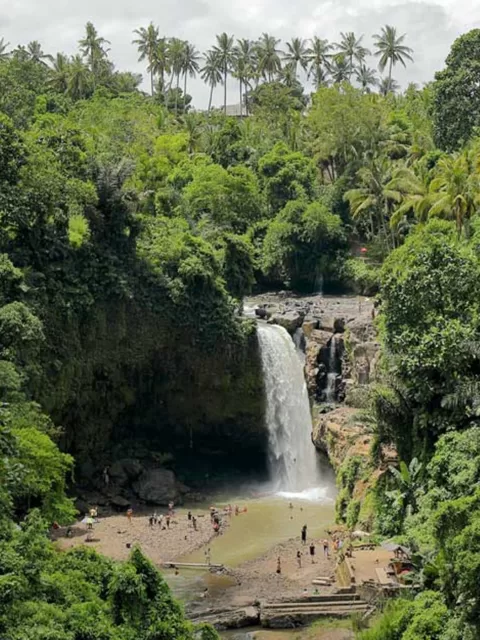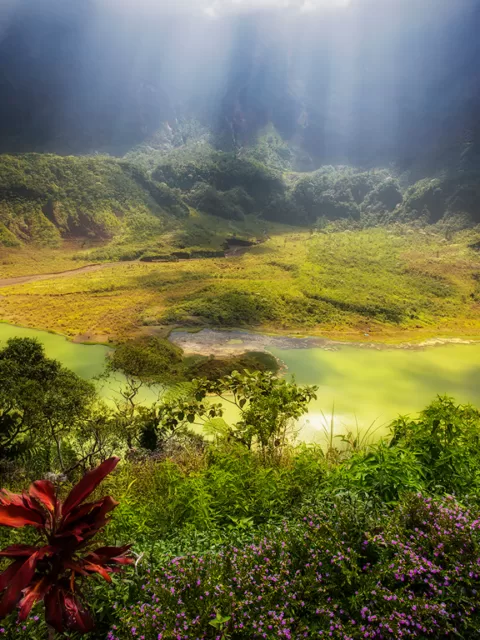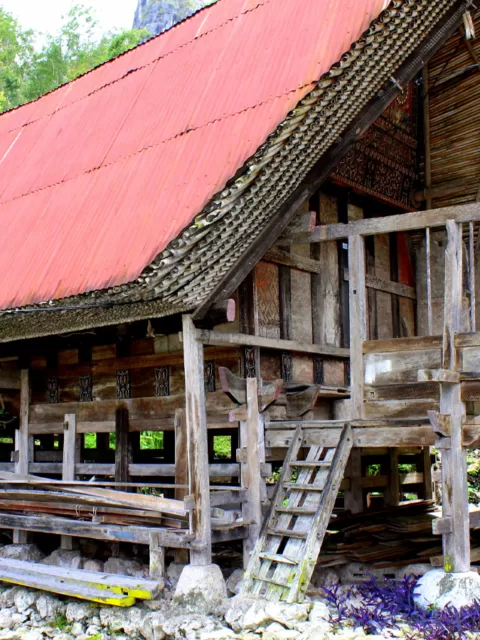Sade Village, Lombok: Your Guide to Experiencing Authentic Sasak Culture
Overview
Nestled amidst the lush landscapes of Lombok, Sade Village beckons travelers to immerse themselves in the cultural tapestry of the Sasak people. This enchanting destination serves as a gateway to an authentic Sasak experience, inviting visitors to witness the living traditions, architectural marvels, and warm hospitality of the local community.
Sade Village stands as a testament to the historical roots and significance of Sasak culture. As one of the few traditional Sasak villages remaining, it offers a unique lens into the heritage of the indigenous people of Lombok. The village is not merely a destination but a living museum where time-honored traditions coexist with the rhythms of modern life, providing a holistic experience for those seeking a genuine cultural encounter.
Sasak Heritage Unveiled
Sasak culture, deeply rooted in Lombok’s soil, traces its origins through centuries of seafaring, trade, and intercultural exchanges. Sade Village, with its ancestral legacy, becomes a living narrative of this rich heritage. From unique agricultural practices to intricate rituals, every aspect of Sasak life finds expression in the traditions upheld by the villagers, creating a cultural mosaic that reflects resilience and adaptability.
Sade Village stands as a guardian of Sasak traditions in the face of modernity. The villagers, with unwavering dedication, preserve ancient customs, ceremonies, and the distinctive Sasak language. The community’s commitment to passing down these traditions to younger generations ensures the continuity of a cultural legacy that defines the identity of not just Sade Village but the entire Sasak community.

The architectural landscape of Sade Village is a canvas painted with the distinct strokes of Sasak design. Traditional Sasak houses, known as “Bale Tani” or “Bale Dauq,” are crafted from indigenous materials such as bamboo and thatch. These unique structures, with their raised platforms and intricately woven walls, are not only functional dwellings but living expressions of Sasak’s identity. Visitors wandering through the village will find themselves surrounded by symbolic motifs, each telling a story of the Sasak people’s connection to nature and their ancestors.
Exploring Sade Village
For those eager to delve into the heart of Sasak culture, guided tours in Sade Village offer an immersive experience. Local guides, often members of the community, unfold the layers of Sasak history, leading visitors through the narrow alleys adorned with traditional Sasak houses. These tours provide insights into the intricacies of Sasak customs, allowing guests to witness traditional ceremonies, learn about daily life, and appreciate the artistry behind the village’s architecture.
Sade’s charm extends beyond its cultural ambiance. Visitors can explore iconic landmarks such as the Sasak houses, each intricately carved with symbolic motifs that narrate the village’s history. The enchanting landscape, with its lush surroundings and traditional Sasak Sasak Lumbung (granary) structures, provides a serene backdrop for those seeking to connect with nature while immersing themselves in the local way of life.
The true essence of Sade Village unfolds in the warm interactions with the locals. Visitors have the opportunity to engage with villagers, participate in daily activities, and perhaps share a moment with families in their traditional homes. These intimate encounters foster cultural exchange, allowing travelers to gain profound insights into the intricacies of Sasak traditions and the genuine warmth of its people.
Daily Life and Traditions
Sade encapsulates a lifestyle harmonized with nature and tradition. Witnessing the daily routines of villagers, from tending to the Sasak Lumbung structures to communal activities, provides a glimpse into the rhythm of Sasak life. The village exudes a sense of serenity, a respite from the bustling world, where time seems to slow down, allowing visitors to savor each moment.

As custodians of their cultural heritage, the community in Sade actively participates in initiatives aimed at preserving and promoting Sasak traditions. Cultural workshops, educational programs, and collaborative efforts with local organizations contribute to the continuity of customs that define Sade’s identity. Visitors may find themselves involved in these initiatives, gaining hands-on experience and contributing to the sustainability of Sasak culture.
Sade comes alive during festivals and events, transforming into a vibrant tapestry of colors and rhythms. Traditional dances, music, and rituals are showcased, offering visitors an opportunity to partake in the joyous celebrations that mark significant moments in Sasak culture. These events create a bridge between the past and the present, allowing travelers to be part of living history.
Craftsmanship in Sade Village
Sade Village is a haven for traditional Sasak craftsmanship, with weaving being a cornerstone of their artistic expression. Local weavers, often women skilled in intricate craft, create vibrant textiles with patterns that tell stories of the Sasak way of life. Visitors can witness the weaving process, from dyeing the threads with natural pigments to the rhythmic dance of the shuttle on the loom. Engaging in hands-on weaving sessions provides travelers not only with a souvenir to cherish but also a deeper connection to the cultural fabric of Sade.
Beyond weaving, Sade is a showcase of Sasak’s artistic expressions. Intricate wood carvings adorn the village, with motifs that reflect Sasak mythology and daily life. Local craftsmen carve stories into bamboo and wood, creating pieces that are both functional and decorative. A stroll through the village offers a visual feast of Sasak artistry, providing visitors with the opportunity to appreciate the meticulous skills passed down through generations.
For those seeking a more immersive experience, Sade Village welcomes hands-on sessions in traditional craftsmanship. Visitors can engage in weaving workshops, guided by skilled artisans who impart their knowledge with warmth and patience. The village provides a nurturing environment for travelers to try their hand at wood carving or other traditional crafts, fostering a deeper understanding of the skills that define Sasak culture.
Culinary Delights of Sade Village
Sade Village invites visitors to savor the flavors of authentic Sasak cuisine. Local eateries offer dishes that reflect the rich culinary heritage of the Sasak people. From savory delights like Ayam Taliwang (spicy grilled chicken) to refreshing traditional beverages, the culinary journey in Sade is a sensory exploration. Travelers can engage in cooking classes, where they learn the art of preparing Sasak dishes using traditional methods and locally sourced ingredients.
Each dish in Sade tells a tale of tradition and local ingredients. Visitors are encouraged to try Plecing Kangkung, a spicy water spinach salad, and Pelecing Ayam, a delightful chicken dish served with a spicy sambal sauce. The culinary offerings are not just about taste; they are a cultural experience that adds a flavorful layer to the overall immersion in Sasak culture.

Sade Village boasts charming cafes and eateries where visitors can enjoy a meal with a view of the picturesque surroundings. Dining experiences often include the warm hospitality of the locals, turning a simple meal into a cultural exchange. Recommendations for must-try dishes and the best spots for enjoying Sasak cuisine add value to the culinary journey in Sade.
Practical Information for Visitors
Accessing the cultural haven of Sade Village involves a scenic journey through the captivating landscapes of Lombok. From the main city or the popular tourist destinations, various transportation options, including local buses or private drivers, can take you to the vicinity of Sade Village. Navigating the local roads, surrounded by lush greenery, builds anticipation for the cultural immersion awaiting visitors.
While Sade Village maintains its rustic charm, modern amenities are available for visitors. Homestays within the village provide an authentic lodging experience, allowing guests to live amidst Sasak culture. Local amenities cater to essential needs, ensuring a comfortable stay while preserving the village’s traditional ambiance. Recommendations for accommodations and insights into the local facilities contribute to a well-prepared and enjoyable visit.
Respect forms the cornerstone of any visit to Sade Village. Being mindful of local customs, seeking permission before capturing photographs, and participating with genuine curiosity fosters a positive exchange between visitors and the community. Embracing the slower pace of village life enhances the quality of the experience, allowing for meaningful connections and a deeper understanding of Sasak culture.
Conservation and Sustainability Efforts
Sade Village stands as a testament to the dedication of its residents to preserving Sasak culture. Ongoing efforts include documentation of oral traditions, archiving cultural artifacts, and engaging younger generations in educational programs. By fostering a sense of pride in their heritage, the community ensures that the essence of Sasak culture endures through time.

Sustainability is at the heart of Sade Village’s approach to tourism. The village embraces eco-friendly practices, promoting responsible tourism that minimizes the ecological footprint. Initiatives focus on community development, ensuring that the economic benefits of tourism directly contribute to the well-being of the residents. By balancing tourism with cultural preservation, Sade strives to create a model that respects both nature and tradition.
Maintaining the delicate balance between welcoming visitors and conserving Sade Village’s heritage is a priority. Strict guidelines govern tourism activities to prevent undue disruptions to the village’s rhythm. The symbiotic relationship between tourism and conservation ensures that future generations inherit a village that proudly retains its cultural and natural splendor.
Final Thoughts
In concluding our exploration of Sade Village, we reflect on its status as a cultural gem in Lombok. Every step in Sade is a journey into the soul of Sasak culture, where tradition and warm hospitality converge to create an unforgettable experience. The village stands as a living testament to the resilience of Sasak heritage and the timeless beauty of a way of life that harmonizes with nature.
To travelers seeking an authentic encounter with Sasak culture, Sade Village extends an invitation to immerse themselves in its living heritage. Here, amidst the weaving looms, carved structures, and warm smiles of the locals, one discovers the authentic charm of Lombok. Sade Village is more than a destination; it is an embrace of tradition, a celebration of community, and a portal to the heart of Sasak culture.
Sade Village, Lombok - A Tapestry of Authenticity
Sade Village in Lombok, Indonesia, offers a cultural odyssey that transcends the ordinary. As a traveler seeking an authentic encounter with Sasak culture, my journey to Sade Village was nothing short of transformative. Nestled amidst the captivating landscapes of Lombok, this cultural haven is a living testament to the resilience and richness of Sasak heritage.
Pros
- Cultural Immersion
- Natural Harmony
- Craftsmanship Experiences
Cons
- Limited Dining Options
- Access Challenges












